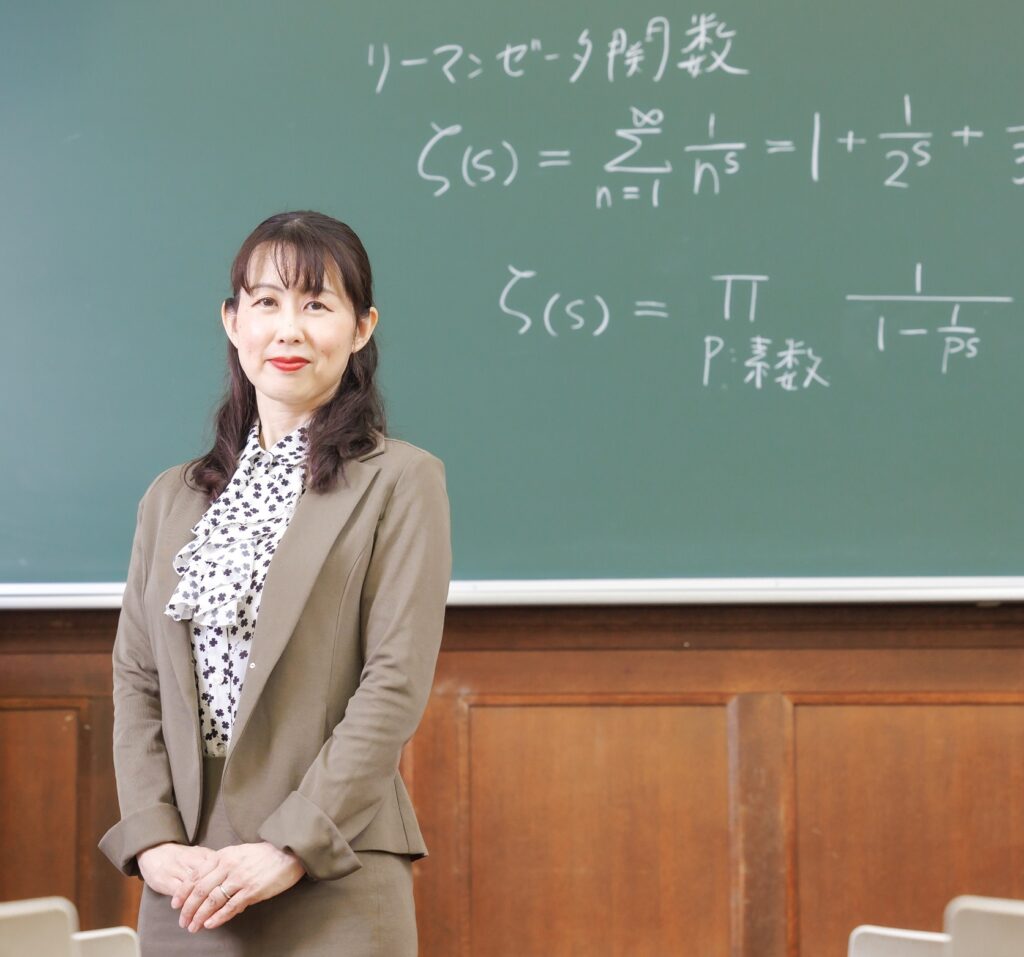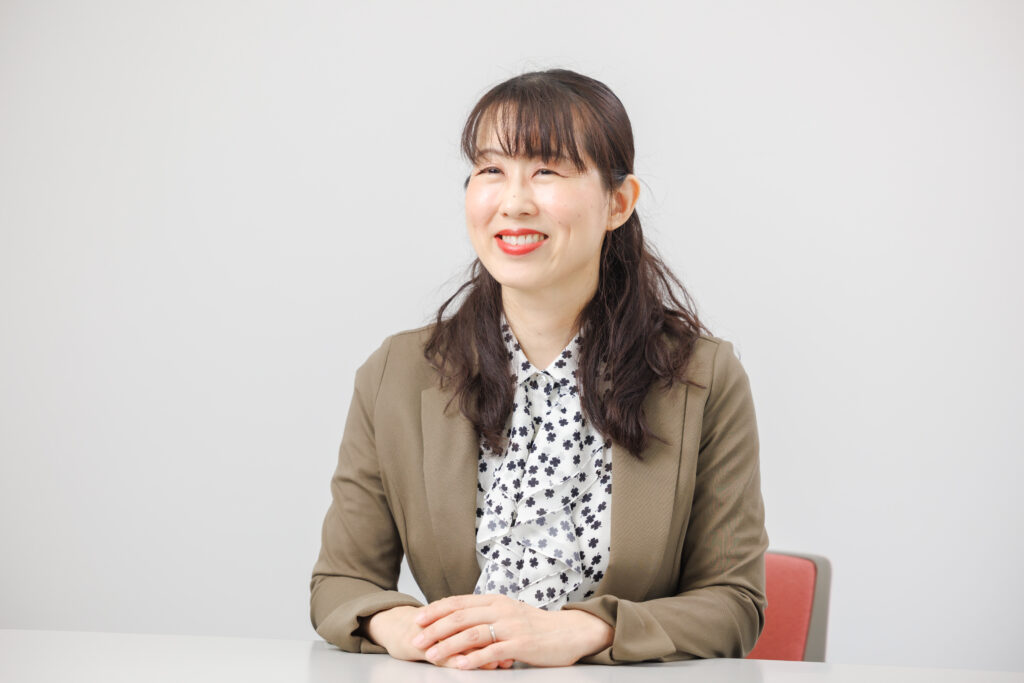
Professor Maki Nakasuji of the Faculty of Science and Technology studies analytic number theory and representation theory. She introduces new zeta functions that are involved in both theories, and studies their properties such as symmetry and duality to explore the possibility of new approaches to elucidate the nature and structure of the problem.
The Riemann hypothesis was proposed in 1859 by the German mathematician Bernhard Riemann, and relates to the regularity of the distribution of prime numbers. More than 160 years have passed since Riemann made his conjecture yet, despite incredible advances in computing, it has still not been proved.
I learned about the Riemann hypothesis and its history when I was a student, which was the chance to study analytic number theory. Studying that theory, in particular, the Riemann zeta function, showed me the breadth of the world of mathematics and made me addicted to its fun.
My first thesis was entitled “Prime geodesic theorem via the explicit formula of Ψ for hyperbolic 3-manifolds” in my first-year of Master’s studies. It discussed the regularity of the distribution of prime geodesics on 3-dimensional manifold, as a geometric analogue to the prime number theorem, which seeks to describe the distribution of prime numbers.
My approach was to use a function known as the Selberg zeta function, which itself is a geometric analogue to the Riemann zeta function. Since my research pertained to the distribution of spectra in hyperbolic spaces, it was widely praised.
New research object combining analytic number theory and representation theory

Analytic number theory and representation theory remain areas of great interest to me. On the other hand, I also wished to find my own unique approach to the research subjects of these theories.
In recent years, I have defined the Schur multiple zeta functions, which is a new kind of zeta function with Schur function structure. Schur function is an important research subject in representation theory. I am working to shed light on the following questions: would the properties of the original functions be maintained? or would it lead to the discovery of new properties and structures in both representation theory and analytic number theory as an application of this function?
It will take time, but my goal is to formulate a new theory by elucidating each of its properties.
Drawing on multiple theories and utilizing interdisciplinary approaches can increase our understanding of the essence and structures of various problems. I hope that this theory will one day help solve unsolved conjectures.
The power of mathematics to solve complex business questions
I am often asked how mathematical research benefits society. Mathematics is a field of pure research and, as such, its benefits to society are not immediate. Let us take cryptography as an example. Cryptography, which is indispensable for the safety of our digital society, makes use of prime numbers—but the mathematics it is based on is several hundreds of years old.
It has already been shown that black holes and other space physics phenomena are directly linked to zeta functions. Indeed, cutting-edge mathematics will doubtlessly be essential to the progress of space engineering and information society—two fields which will only increase in importance going forward.
As technologies mature, mathematics is required to take the next step—and for this reason, many corporations are looking to mathematics to make their next breakthroughs. If we do not limit ourselves to just one branch of mathematics and, instead, take a more interdisciplinary approach to utilizing mathematics in society, then its effects will surely exceed our expectations.
The power and fascination of mathematics can only be fully understood through study; while it may not be the easiest of subjects, I encourage anyone with even the slightest interest to embrace the challenges it presents.
The book I recommend
“Futari de tsumuida monogatari”(A story created by the two of us)
by Fumiko Yonezawa, Demadosha

Autobiography of Fumiko Yonezawa, a leading scientist and former president of the Physics Society of Japan. Yonezawa was torn between becoming a researcher or a full-time housewife, until a conversation with her husband-to-be prompted her to continue as an academic even after marriage. When I was at a similar crossroads, this book taught me it was possible to combine research and motherhood.
-
Maki Nakasuji
- Professor
Department of Information and Communication Sciences
Faculty of Science and Technology
- Professor
-
Professor Maki Nakasuji graduated from the Department of Mathematics, Faculty of Science and Technology, Keio University, and received her Ph.D. in science from the university’s Graduate School of Science and Technology. She worked as a Young Scientist Research Fellow at the Japan Society for the Promotion of Science, a fellow at the Center of Excellence Program, Keio University, a researcher at the Tsuda University Institute for Mathematics and Computer Science, a research scholar at Stanford University, a lecturer at the Center for Liberal Arts, Kitasato University College of Liberal Arts and Sciences, and an associate professor at the Faculty of Science and Technology, Sophia University. Nakasuji was appointed to her current position in 2021.
- Department of Information and Communication Sciences
Interviewed: August 2022